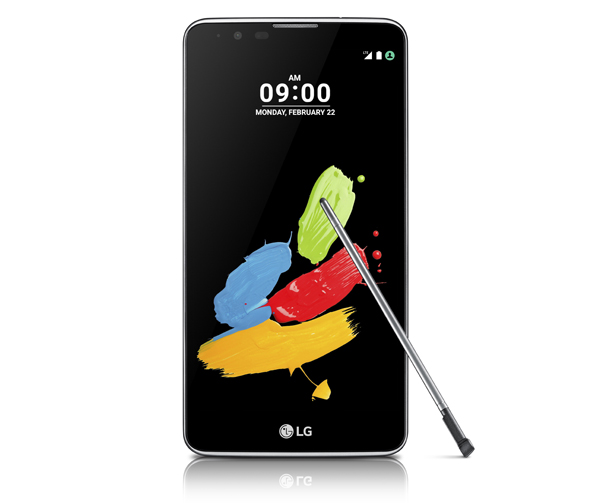LG, day after day, is unveiling the entire line-up of products that will present at the Mobile World Congress in Barcelona. After reviewing the past few hours the characteristics of the mid-range of the new line of smartphones "X", which is currently composed of X and X cam screen, it's the turn of LG Stylus 2 announced today by the Korean company.
It is the heir of LG Stylus and, as such, a product that does support the stylus one of its main distinctive features. Like other similar devices, the display 5.7 "is large to such an extent as to bring the device into the category of phablet, which is required to give substance to product vocation that stands as a potential alternative to the traditional notebook, and that therefore , must allow easy work of taking notes. Compared to the previous LG stylus 2 model comes with lower thickness and weight, there are refinements of the stylus, now "nano-coated" to further improve the accuracy.
The examination of the hardware profile of LG Stylus 2 shows the membership of the midrange terminals segment (see the display that although large, has a HD resolution and the amount of RAM less than 2GB). Not missing at the same time, a constructive care that shines through examining the backcover with texture Spin Hairline and the metal frame that runs along the perimeter of the display. LG also has not neglected the versatility of use of the device, integrating a 3000 mAh removable battery and the ability to expand storage memory via microSD.
Special care has been taken to make the most of the stylus with a series of special functions. Pen Pop, for example, displays a context menu after the extraction of the stylus for easy access to functions such as Pop and Pop Memo Scanner. Another new software dedicated to the new LG Stylus Pen Keeper is represented by preventing the loss of the stylus, informing the user that the same has been extracted from the body. LG, most recently, predicted the new font Calligraphy Pen, simulating writing with fountain pen.
Detailed technical features include:
operating system Android 6.0 Marshmallow
Display 5.7 "HD In-Cell Touch (1280 x 720 pixels)
CPU: Quad-Core 1.2GHz
13-megapixel rear camera
8 megapixel front camera
Memory: 1.5GB LPDDR3 and 16GB of expandable storage via microSD
Battery 3000 mAh removable
Dimensions: 155 x 79.6 x 7.4mm
Weight: 145g
Network: LTE / HSPA + / GSM
Connectivity: Wi-Fi 802.11 b, g, n / Bluetooth 4.1 / USB 2.0
Color: Titan / White / Brown
It is the heir of LG Stylus and, as such, a product that does support the stylus one of its main distinctive features. Like other similar devices, the display 5.7 "is large to such an extent as to bring the device into the category of phablet, which is required to give substance to product vocation that stands as a potential alternative to the traditional notebook, and that therefore , must allow easy work of taking notes. Compared to the previous LG stylus 2 model comes with lower thickness and weight, there are refinements of the stylus, now "nano-coated" to further improve the accuracy.
Special care has been taken to make the most of the stylus with a series of special functions. Pen Pop, for example, displays a context menu after the extraction of the stylus for easy access to functions such as Pop and Pop Memo Scanner. Another new software dedicated to the new LG Stylus Pen Keeper is represented by preventing the loss of the stylus, informing the user that the same has been extracted from the body. LG, most recently, predicted the new font Calligraphy Pen, simulating writing with fountain pen.
Detailed technical features include:
operating system Android 6.0 Marshmallow
Display 5.7 "HD In-Cell Touch (1280 x 720 pixels)
CPU: Quad-Core 1.2GHz
13-megapixel rear camera
8 megapixel front camera
Memory: 1.5GB LPDDR3 and 16GB of expandable storage via microSD
Battery 3000 mAh removable
Dimensions: 155 x 79.6 x 7.4mm
Weight: 145g
Network: LTE / HSPA + / GSM
Connectivity: Wi-Fi 802.11 b, g, n / Bluetooth 4.1 / USB 2.0
Color: Titan / White / Brown

Comments
Post a Comment